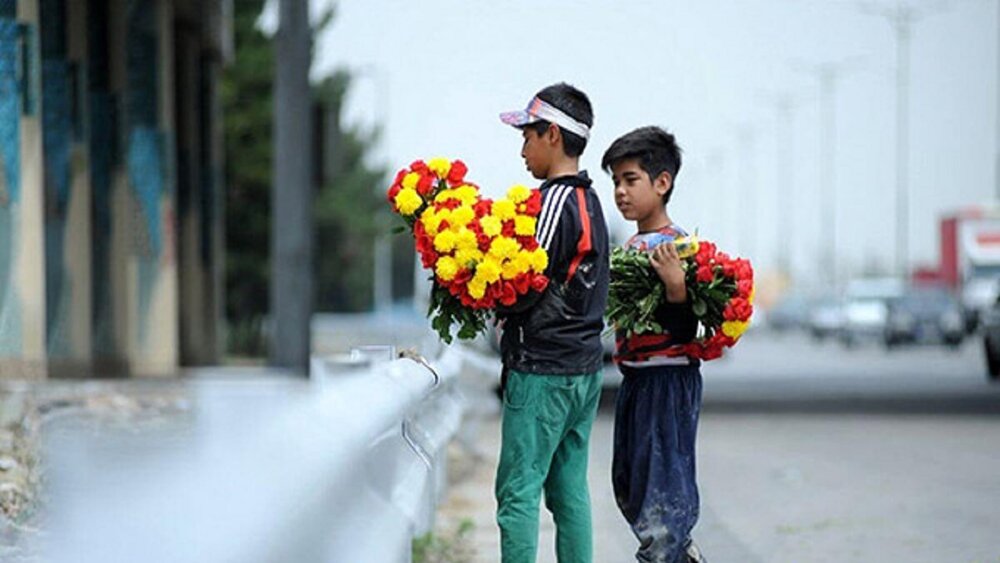End child labor!

TEHRAN – June 12 marks the World Day Against Child Labor under the theme “Universal Social Protection to End Child Labor.” In Iran, up to 80 percent of working children are foreign nationals.
The 2022 theme of the world day calls for increased investment in social protection systems and schemes to establish solid social protection floors and protect children from child labor.
While significant progress has been made in reducing child labor over the last two decades, progress has slowed over time, and it has even stalled during the period 2016-2020. Today, 160 million children are still engaged in child labor – some as young as 5.
Government social protection systems are essential to fight poverty and vulnerability and eradicate and prevent child labor. Social protection is both a human right and a potent policy tool to prevent families from resorting to child labor in times of crisis.
However, as of 2020 and before the COVID-19 crisis took hold, only 46.9 percent of the global population were effectively covered by at least one social protection benefit while the remaining 53.1 percent – as many as 4.1 billion people – were left wholly unprotected. Coverage for children is even lower. Nearly three-quarters of children, 1.5 billion, lacked social protection.
Today, 160 million children are still engaged in child labor – some as young as 5. Significant progress towards ending child labor requires increased investment in universal social protection systems, as part of an integrated and comprehensive approach to tackle the problem.
Mahmoud Aligoo, an official with the Welfare Organization, said that more than 44 percent of working children are members of a family of 4 to 6, which is also worrisome.
The Welfare Organization has covered over 14,000 children to control child labor, he said, adding, "We currently have 67 training and support centers run by NGOs and 31 government-run 24-hour centers."
This is the result of various processes and economic issues in the region and neighboring countries; economic issues and political and cultural issues are highly effective, he lamented.
“The second issue is the way we look at these children. First of all, we must accept that children are not to blame for this process and are vulnerable to this social, economic, and cultural process,” he stated.
“We seek social support for the families of working children. In addition, we must provide them with cultural, social, and economic empowerment,” he added.
More than 80 percent of these children in Iran are foreign nationals. A national decision must be made on the issue of refugees and illegal citizens, he further noted, emphasizing the need to enhance the cooperation of responsible bodies to contain the issue.
A five-point plan for labor and street children will be implemented in 12 provinces of the country, Aligoo said.
Empowering the child's family, collecting labor children's biometric information, implementing a child-friendly plan, using the media system, and continuously monitoring the labor child’s condition through a special system are among the five steps of this plan, he said.
70,000 street children
There are two concepts for labor children, some of whom are street children and others who are not homeless but have to work to provide a family livelihood.
Street children are homeless boys and girls, aged under 18 years, for whom “the street” has become home or their source of livelihood, and who are inadequately protected or supervised.
According to the Society for Protecting the Rights of the Child (SPRC), there are 14,000 dumpsite pickers in Tehran, of which 4,700, or one-third of them, are children.
Habibollah Masoudi Farid, the deputy head of the Welfare Organization, announced in 2020 that there are an estimated 70,000 street children in the country. Of course, given that the conditions of children working in workshops are different, Masoudi Farid said that there are no exact statistics.
Under the law, the employment of children aged 15 or younger is prohibited in Iran and there are also restrictions on the types of jobs that persons between 15 and 18 years can do. For example, no child is allowed to work on jobs that pose occupational health hazards.
Financially struggling children
Referring to the leading causes of child labor in the country, Seyed Hassan Mousavi Chalak, head of the Iranian Social Workers Association, has said that the current causes of child labor in the country are similar to its global causes, which are economic and financial issues.
The inefficient social security system is another reason behind child labor. If the coverage of social security expands and becomes stronger, a significant part of this phenomenon will decrease.
Some 83-87 percent of working children are from financially struggling families.
Currently, 5-6 million people (that are legally eligible for a living allowance) are under the coverage of the Welfare Organization and Imam Khomeini Relief Foundation and are receiving subsidies, but the pension does not cover their living expenses.
Although the financial burden is indeed heavy for the government, we missed the capacity to expand social support, which might have been affected by various factors, such as U.S. sanctions, improper management, etc.
Now that the country’s economy is not in good condition, the population in need of continued support is growing, and this is worrisome.
Working children are the consequence of inefficient economic and social security systems.
FB/MG
Leave a Comment